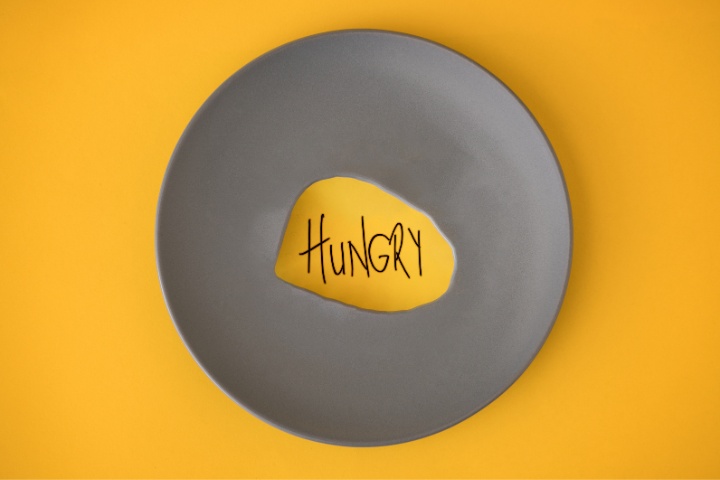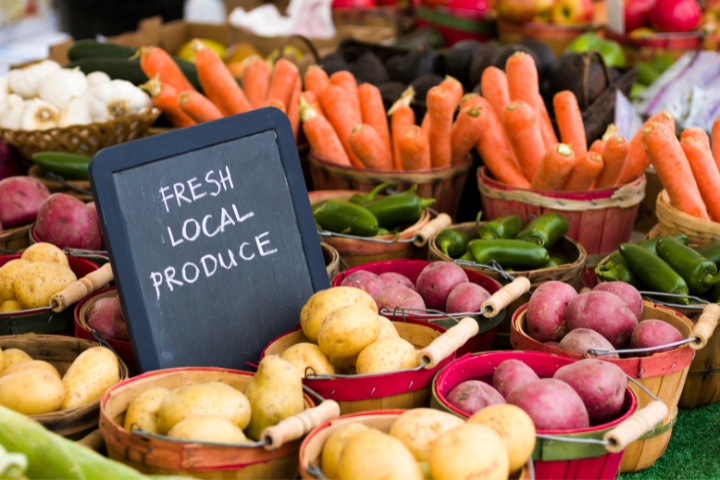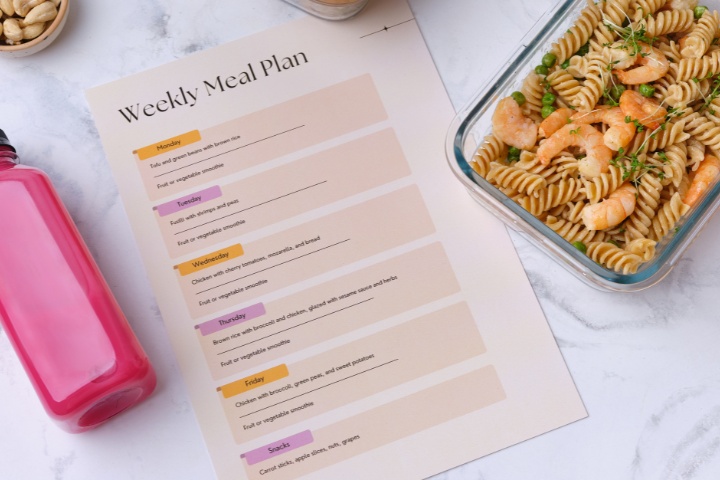Looking to save money on groceries? Check out these helpful tips and tricks for cutting costs on your weekly shopping trips. Learn how to meal plan, use coupons, shop sales, and buy in bulk to stretch your dollar further. Whether you’re a busy parent or a college student on a budget, these strategies can help you save big on your grocery bill. Don’t miss out on the opportunity to save money and still eat well. Start implementing these tips today and watch your savings grow!

Grocery shopping is an essential part of our lives.
We all need to eat to survive, and therefore, every household spends money on groceries on a regular basis.
However, controlling these expenses without going over budget can be quite challenging.
It’s no secret that food prices have been on the rise in recent years, and it’s not uncommon for households to spend a large amount of money on groceries each month.
According to the United States Department of Agriculture (USDA), the average household of four spends between $800 and $1200 per month on groceries.
That’s a huge amount of money! But don’t worry, there are plenty of ways to save money while still buying quality food.
Here are ten tips that can significantly impact your budget and help you save money while buying groceries:
1. Make a shopping list:

Before heading out shopping, it’s always a good idea to make a list of all the things you need to purchase.
This simple step can help you avoid making unnecessary purchases and keep you focused on your shopping goals.
To start, think about what you need to buy for the upcoming week or month.
This might include groceries, household essentials, personal care items, or anything else you might need.
Take the time to write down each item on a piece of paper or in a notes app on your phone.
As you create your list, think about any special occasions or events coming up that might require specific items.
For example, if you’re attending a friend’s birthday party, you might need to purchase a gift or party supplies.
By having a list of everything you need to buy, you can stay focused while you’re shopping and avoid getting sidetracked by items that aren’t on your list.
It also makes it easier to keep track of your spending and ensure that you’re sticking to your budget.
So, the next time you’re planning a shopping trip, take a few minutes to create a list of all the things you need.
It’s a small but effective step that can help you save time, and money, and reduce the stress of shopping.
2. Use coupons:

Buying groceries is a task that we all have to do, and it can often be a bit expensive.
However, there is a way to save some money while still getting all the things you need.
Coupons can be a lifesaver when it comes to cutting down on grocery expenses.
To start with, coupons can be found in a variety of places.
You can find them online on websites such as Coupons.com, on posters at the grocery store, or even in newspapers.
These coupons offer discounts on various products, so it’s important to keep an eye out for them and cut them out as soon as you spot them.
In addition to traditional coupons, you can also download apps like Ibotta, Honey, and Rakuten.
These apps offer cashback deals and coupons that can be used at various grocery stores.
Simply scan your receipt after purchasing your items and receive cashback or rewards that you can use towards future grocery trips.
Using coupons and cashback apps can save you a lot of money in the long run.
It may take a bit of extra effort to find them and cut them out, but the savings are worth it.
So the next time you go grocery shopping, be sure to keep an eye out for coupons and consider downloading one of these apps to make your shopping experience a bit more affordable.
3. Buy generic brands:

When it comes to shopping, many people have a tendency to opt for well-known brand names.
However, generic or store-brand products can often be just as good, if not better, than their branded counterparts, and for a lower cost.
In fact, in most cases, generic brands are made with the same ingredients and manufacturing processes as their name-brand counterparts.
The only difference is the label on the packaging.
While some people may be hesitant to try these products, it’s worth giving them a chance.
You might be pleasantly surprised by the quality and savings that come with buying generic.
Of course, it’s always wise to do your own research and read reviews before trying a new product, regardless of the brand.
But in general, there’s no harm in giving generic brands a chance.
You might just find your new go-to product without breaking the bank.
4. Shop in bulk:

When it comes to saving money on groceries, buying in bulk is a smart strategy.
If you use certain items frequently, like rice, pasta, and canned goods, it’s worth looking for deals on larger quantities.
By purchasing in bulk, you’re able to take advantage of lower per-unit costs.
This means that while the upfront cost might be higher, you’ll end up spending less money in the long run.
For example, if you purchase a 5-pound bag of rice instead of a 1-pound bag, the cost per pound will likely be significantly lower.
Of course, it’s important to make sure that you have enough space to store your bulk purchases.
You don’t want to end up with a pantry full of food that you can’t use before it goes bad.
However, if you’re able to plan ahead and purchase wisely, buying in bulk can be a great way to save money on your grocery bill.
5. Avoid shopping when hungry:

Have you ever gone grocery shopping while feeling hungry, only to end up with a cart full of junk food and unnecessary items?
If so, you’re not alone.
Shopping on an empty stomach can lead to impulsive purchases that can quickly add up and sabotage your budget.
Imagine this: you walk into the grocery store with an empty stomach, feeling famished and ready to devour anything in sight.
As you peruse the aisles, you find yourself drawn to the chips, cookies, and other junk food that you wouldn’t normally buy.
Your stomach is growling, and you convince yourself that you need these snacks to tide you over until your next meal.
But as you make your way to the checkout, you start to regret your choices.
The total cost of your groceries is much higher than you anticipated, and you realize that you’ve spent a large chunk of your budget on impulse purchases that you don’t really need.
To avoid this scenario, it’s important to eat before you go grocery shopping.
A quick snack or meal can help you make better decisions and stick to your shopping list.
So next time you head to the store, remember to fill up before you go, and you’ll be more likely to make thoughtful, budget-friendly choices.
6. Buy seasonal produce:

Seasonal produce is a wonderful thing.
Not only is it fresh and flavorful, but it also tends to be less expensive than produce that is out of season.
When fruits and vegetables are in season, it means they are being harvested at their peak and can be found locally, rather than being shipped from far away.
This not only reduces the cost of transportation but also supports local farmers, who are able to sell their produce directly to consumers.
For example, in the summer months, you may find an abundance of juicy tomatoes, sweet corn, and crisp cucumbers, all grown locally and available at farmers’ markets or grocery stores.
In the fall, you might find a variety of apples, pumpkins, and squash, perfect for making cozy, comforting dishes.
And in the winter, hearty greens like kale and Brussels sprouts are abundant, providing a nutritious boost during the colder months.
Overall, seasonal produce is a win-win for both your wallet and your taste buds, while also supporting local farmers and reducing the environmental impact of transportation.
7. Avoid pre-packaged foods:

In today’s fast-paced world, pre-packaged foods have become a go-to option for many people.
They are easy to buy, quick to prepare, and require minimal effort.
However, this convenience comes at a cost, as pre-packaged foods are often more expensive than their homemade counterparts.
By opting for fresh ingredients and making meals from scratch, you can save money while also reaping the benefits of healthier and tastier meals.
Fresh ingredients are often more affordable and provide more nutrients than their pre-packaged counterparts.
Plus, cooking from scratch allows you to customize your meals to your liking and avoid any preservatives or additives that may be present in pre-packaged foods.
Making meals from scratch may seem daunting, but it can be a fun and rewarding experience.
You can experiment with different flavors and ingredients, and even involve family and friends in the cooking process.
By prioritizing fresh ingredients and home cooking, you can enjoy delicious and nutritious meals while also saving money.
8. Compare prices:

If you’re planning on making a purchase, it’s always a good idea to compare prices at multiple stores before making a final decision.
This is especially true if you’re looking for a good deal, as different stores may offer different discounts on the same item.
For example, let’s say you’re in the market for a new TV.
Store A might have the TV you want on sale for 10% off, while Store B is only offering a 5% discount.
By taking the time to check the prices at both stores, you could save yourself a significant amount of money.
It’s also important to keep in mind that certain items may be priced differently at different stores.
For instance, Store A might have a lower price on electronics, while Store B might have a better deal on home goods.
By comparing prices at multiple stores, you can ensure that you’re getting the best possible price on the item you want to purchase.
9. Use cashback apps:

If you’re someone who loves to shop and wants to save some money, then cashback apps can be a great option for you.
These apps work by offering you cashback on your grocery purchases, which can help you save money in the long run.
Fetch Rewards, Receipt Hog, and Dosh are some of the popular cashback apps that can be easily downloaded on your smartphone.
Once you have installed the app, you simply need to scan your grocery receipts and earn cashback for your purchases.
The app will then credit your account with cashback, which can be redeemed later for rewards or cash.
The amount of cashback you earn depends on the app and the products you purchase, but it’s usually a percentage of the total amount spent.
These apps also offer additional ways to earn cash back, such as by referring friends or completing surveys.
Overall, cashback apps are a convenient and easy way to save money on your grocery shopping.
So, next time you hit the supermarket, make sure to download one of these apps and start earning cashback on your purchases.
10. Plan your meals:

Planning your meals ahead of time is a smart and practical way to avoid unnecessary purchases and reduce food waste.
By taking the time to plan your meals for the week, you can make a detailed shopping list that ensures you only buy what you need.
This means you’ll avoid impulse buying, which can lead to wasted food and money.
Planning your meals also allows you to use up ingredients before they expire, reducing the amount of food that goes to waste.
Additionally, by having a clear idea of what you’re going to eat, you’re less likely to order takeout or eat out, which can save you a significant amount of money in the long run.
Overall, planning your meals is a quick and easy method to cut down on food waste, save money, and plan your week.


Conclusion:
You can save money on groceries while still eating well if you use the following tips.
Every little bit helps, so track your savings and be proud of your achievements.





